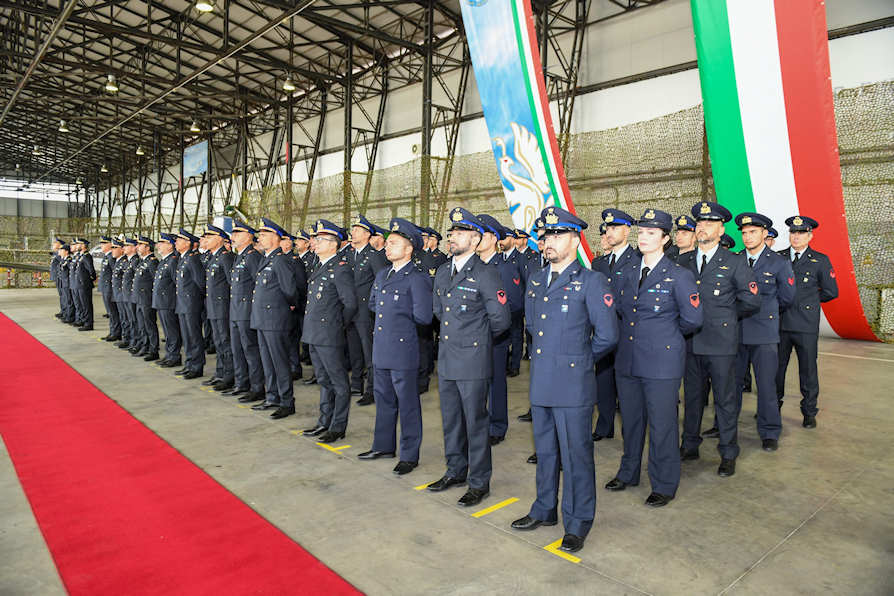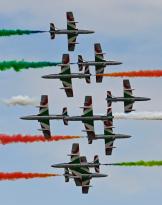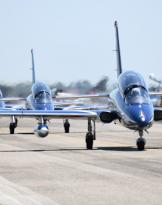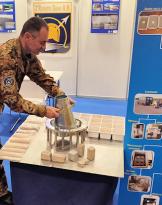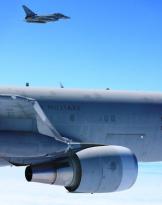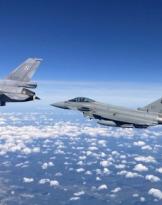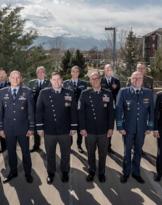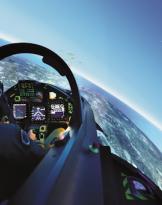The event was chaired by the Chief of Staff of the Air Force, Air Squadron General Luca Goretti, and saw the participation of the Commander of the Schools/3rd Air Region, Gen. sa Silvano Frigerio, of the civil, military and religious authorities of the Lazio town, as well as the welcome presence of the son of the aviator and aeronautical designer, Carlo Ferrarin (for example, the project of the Caliph, glider used for years by the Air Force), and his nephew, Roberto.
A strong bond, that between Guidonia and the great aviator of Venetian origins, which today's event contributes to further strengthening, testifying to the consolidated relationship of closeness and collaboration existing between the city, its population and the Armed Forces. Right on the Guidonia Montecelio airport, in 1941, Arturo Ferrarin lost his life while he was testing an experimental aircraft and again Guidonia, with its experimental center of the newly formed Regia Aeronautica - at the turn of the 20s and 30s - it was the flagship and authentic driving force for the development of the aircraft, it embodies and represents the fulcrum of the pioneering activity of the great aviator from Vicenza.
In July 1928, in fact, Ferrarin conquered the world record for distance in a straight line without stopping (7.188 km) by taking off from Montecelio airport and landing in Touros, Brazil. A feat which, together with another important record achieved in the same year together with Major Carlo Del Prete - that of closed circuit flight duration (7666 km in 58 hours and 37 minutes) - earned him the decoration of the gold medal to aeronautical valor, numerous foreign honors and further international fame and prestige after that obtained with the Rome-Tokyo Raid of 1920, carried out with Lieutenant Guido Masiero on board SVA9 aircraft of the Royal Army, covering over 18000 km in stages in 109 hours of flight.
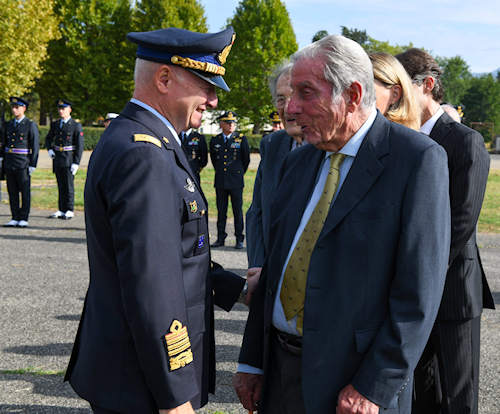 Originally from Thiene, Ferrarin was fascinated by the "heavier than air" as a boy, enlisting to take part in the First World War as a machine gunner in the aviator corps, and then becoming a pilot second lieutenant. He operated in various departments, including the 91st squadron, the one called "degli Assi", where he came into contact with those who remained the most famous aviators in our history: Baracca, Ruffo di Calabria, Olivari.
Originally from Thiene, Ferrarin was fascinated by the "heavier than air" as a boy, enlisting to take part in the First World War as a machine gunner in the aviator corps, and then becoming a pilot second lieutenant. He operated in various departments, including the 91st squadron, the one called "degli Assi", where he came into contact with those who remained the most famous aviators in our history: Baracca, Ruffo di Calabria, Olivari.
“The feats completed by the 'Moro' – this is his nickname for everyone – testify to the uncommon audacity, courage and dexterity of these men”, underlined the col. Michele Cesario, commander of the 60th wing, in his speech. “But these feats are also the result of a great deal of preparation, study, defeats and victories, with the involvement of all aeronautical professionals, from the research and development components to the logistics of adhesion and support. Precisely these values, this modus operandi, are the true treasure that the 60th wing will now be able to safeguard and above all pass on to young people as a flight school and messengers of aeronautical culture".
The Chief of Staff of the Air Force, Air Squadron General Luca Goretti, in speaking at the end of the ceremony, wanted to remember how Ferrarin “has been and is undoubtedly an important element of our Armed Forces for its human and character richness, as well as for its technical and professional capacity. With his businesses, he made an essential contribution to the development of the air vehicle, which for the first time established itself as an element of union between distant territories and peoples, but also an important engine for technological development. The name of Arturo Ferrarin brings with it imperishable teachings of attachment to the homeland, courage, honesty, audacity, spirit of sacrifice, elements that unite us and inspire us in our daily actions, allowing us to rise, even in moments of difficulty, towards ideals that they must be part of the heritage of those who have chosen to serve the country in uniform".
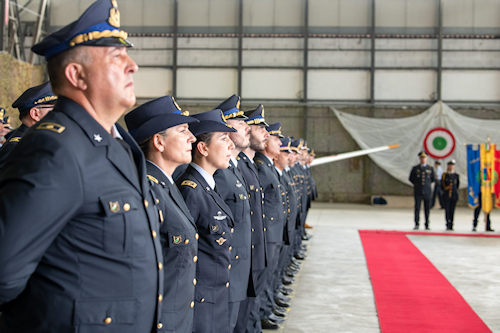
“The epic undertaking of the Rome – Tokyo Raid, in particular – added General Goretti – it is the result of Italian design capacity, made possible by combining significant organizational and logistical efforts with the iron self-sacrifice of the personnel involved. And taking a leap of over one hundred years, I like to underline what happened at the beginning of August, when four of our F-35s landed at the Japanese Komatsu base for a joint exercise. Beyond today's technological capabilities, I can assure you that the enthusiasm, participation and inspiration of the Japanese people have remained the same now as then.".
On the sidelines of the naming ceremony, an artefact commemorating the historical link of the city and the airport with the figure of Arturo Ferrarin was also inaugurated. The work, “A double sundial for Arturo Ferrarin”, conceived and created thanks to a Path for Transversal Skills and Orientation (PCTO) which involved the students of the ISS Higher Institute of Guidonia and with the collaboration of the Buzzi Unicem company, intends to commemorate the Italy-Brazil Raid by setting the exact time of take-off from Montecelio airport, i.e. 18pm :51 of 3 July 1928.
Before the dedication ceremony, the Chief of Staff of the Air Force placed a laurel wreath to the Fallen on the monumental memorial stone inside the airport, which commemorates the very place where Arturo Ferrarin lost his life on board his airplane. “This historic day – underlined General Goretti in his speech during the ceremony – wants to pay homage to the sweat and blood of those who served the Tricolor with honor until the ultimate sacrifice. Among these, once again with us, Col. Giuseppe Cipriano and Lieutenant Colonel Marco Meneghello", pilots of the gliding group of the 60th wing, recently disappeared in a tragic plane crash.
The 60th wing, "cradle" of the history of the Armed Forces, with the recent opening of a historical route reminiscent of what was the senior management of studies and experiences, wants to reconnect with a historical period that dates back to the beginnings of flight, where Italy, with its aviators and engineers, marked what, in fact, were milestones, record after record, in the history of world aviation.
